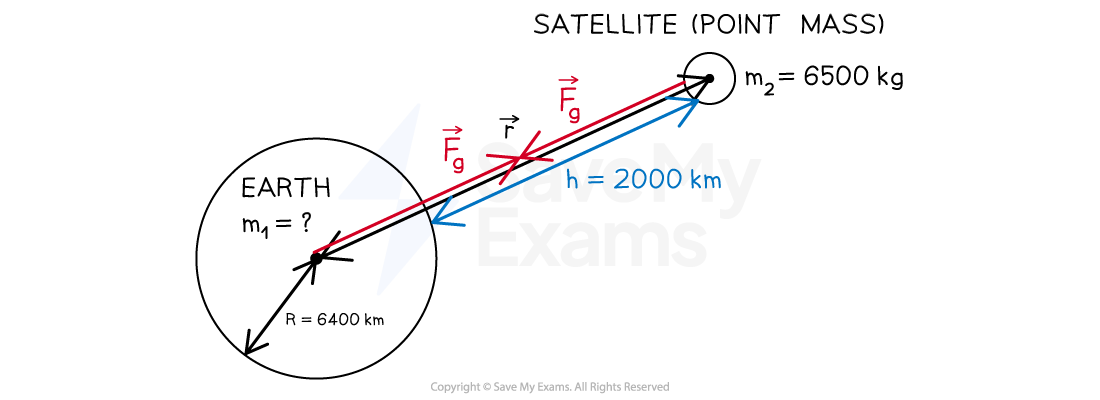Newton's Law of Gravitation (College Board AP® Physics 1: Algebra-Based): Study Guide
Newton's law of gravitation equation
Newton’s law of universal gravitation describes the gravitational force between two objects or systems as:
directly proportional to each of their masses
inversely proportional to the square of the distance between the systems’ centers of mass
Newton's law of universal gravitation applies between two bodies when outside a uniform gravitational field
For example, between the Earth and the Sun or the Earth and the Moon
Although planets are not point masses, their separation is much larger than their radius
Therefore, Newton’s law of gravitation applies to planets orbiting the Sun
Recall that the mass of a uniform sphere can be considered to be a point mass at its centre
So the gravitational field around a uniform sphere is identical to that around a point mass
The equation for Newton's law of universal gravitation is given by:
Where:
magnitude of the gravitational force between the two objects, measured in
universal gravitational constant =
mass of object 1, measured in
mass of object 2, measured in
the distance between the centers of mass of the two objects, measured in
Quantities in Newton's law of universal gravitation

The
relation is called the ‘inverse square law’
This means that when the distance between masses is doubled, the gravitational force between the objects reduces by
Worked Example
A satellite of mass 6500 kg is orbiting the Earth at 2000 km above the Earth's surface. The gravitational force between them is 37 kN.
Which of the following is the mass of the Earth? The radius of the Earth is 6400 km.
A
B
C
D
The correct answer is D
Answer:
Step 1: Analyze the scenario
Draw a diagram to show all the known quantities

The object model is used in this scenario
is the distance between the center of the Earth and the satellite equal to the radius of the Earth
plus the height of the orbit of the satellite
Step 2: List the known quantities
Mass of satellite,
Height of satellite orbit above the Earth's surface,
Magnitude of the gravitational force between Earth and satellite,
Radius of the Earth,
Universal gravitational constant,
Step 3: Calculate the distance between the center of the Earth and the satellite
Step 4: Rearrange the equation for Newton's law of universal gravitation to make the mass of the Earth the subject
Step 5: Substitute the known quantities into the rearranged form of the equation to calculate the mass of the Earth
The answer is therefore D
Examiner Tips and Tricks
A common mistake in exams is to forget to add together the distance from the surface of the planet and its radius
to obtain the value of r. The distance r is measured from the center of the mass, which is from the center of the planet.

Make sure to square the separation r in the equation!

Unlock more, it's free!
Did this page help you?